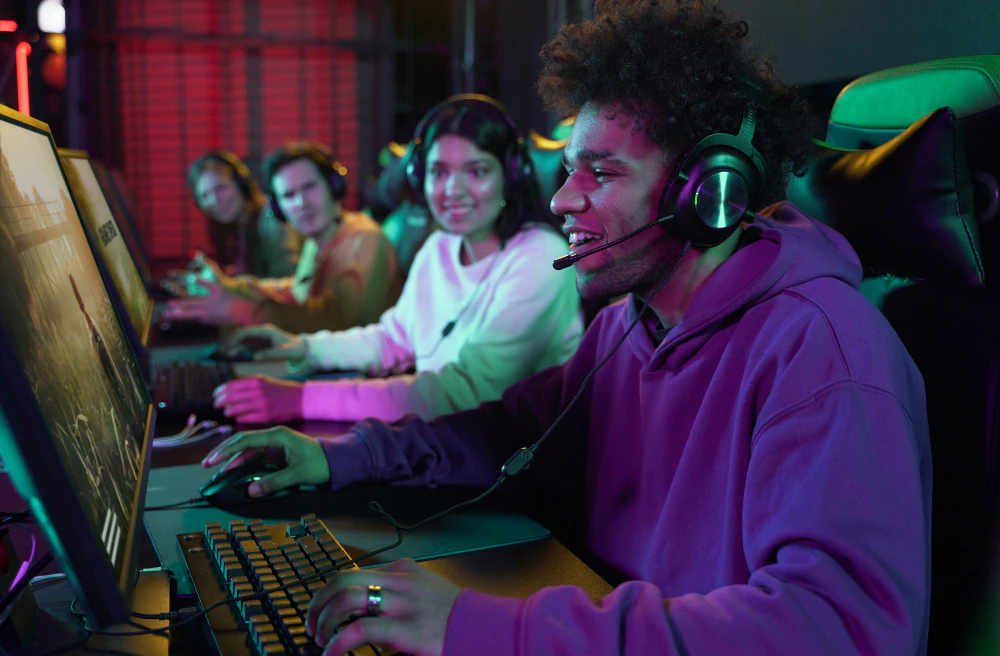When you think of your favorite video game moments, chances are the soundtrack is right there with the memory. Whether it’s the heart-pounding tension of a boss fight, the calm of an open-world exploration, or the nostalgic chiptune of an old platformer, sound is as essential to gaming as graphics or storylines.
But how exactly does music and audio influence the way we play? More importantly, why is it such a powerful tool in shaping player experience?
Audio as Emotional Architecture
Game designers have long understood that audio is not just an accessory—it’s architecture for emotion. In horror games like Silent Hill or Dead Space, ambient sounds and discordant tones build an atmosphere of unease long before any visual threat appears. In contrast, RPGs like Final Fantasy use sweeping orchestral themes to signal emotional shifts in the narrative.
Even casual puzzle games apply this principle. Subtle background music adjusts in tempo as the difficulty increases, creating a sense of urgency or flow depending on the challenge. The emotional manipulation is often subconscious, but incredibly effective.
Feedback Loops and Player Response
Sound in games doesn’t just create mood—it also provides feedback. The click of a successful move, the buzz of an error, the roar of a level-up: these are audio cues that help players understand and master game mechanics.
In competitive titles, milliseconds matter. A slight footstep or the distant sound of reloading can be a game-changer in first-person shooters like Call of Duty or Valorant. Professional players even train their ears to detect directionality and weapon types based solely on sound.
Interestingly, some online platforms that merge gaming and wagering also use sound to reinforce gameplay patterns. For instance, reward chimes and animated reels with layered audio tracks are commonly used in chance-based games—elements that can also be seen in systems accessible through multibet88 login, where sound plays a role in player engagement even outside traditional narrative structures.
Adaptive Music and Dynamic Scoring
Modern games are moving beyond static soundtracks. Instead, they use adaptive music that changes based on player behavior. Games like Red Dead Redemption 2 or The Legend of Zelda: Breath of the Wild feature scores that evolve in real time, blending ambient layers depending on the player’s location, actions, and game state.
This form of dynamic scoring makes each player’s experience feel personal. It’s a shift from a scripted audio track to a responsive soundscape—one that follows the player, rather than leads them.
The Nostalgia Factor
Some of the most iconic game music is incredibly simple—yet unforgettable. The Super Mario Bros. theme or Tetris’s “Korobeiniki” melody have become cultural symbols, recognized even by people who’ve never played the games.
These tunes tap into something deeper: nostalgia. Audio has a way of embedding itself in memory more powerfully than visuals alone. This is why remastered editions of games often preserve the original soundtrack, or why composers are brought back for sequels decades later.
Final Thoughts
Sound design in games is often underappreciated, but it’s one of the most powerful storytelling and gameplay tools available. As audio technology continues to evolve—with 3D spatial sound, binaural recording, and AI-generated music—the way we experience virtual worlds will only become more immersive.
So the next time you’re lost in a fantasy realm, racing through a neon-lit circuit, or trying your luck in a game of chance, take a moment to listen. The sound might be guiding your emotions more than you realize.


